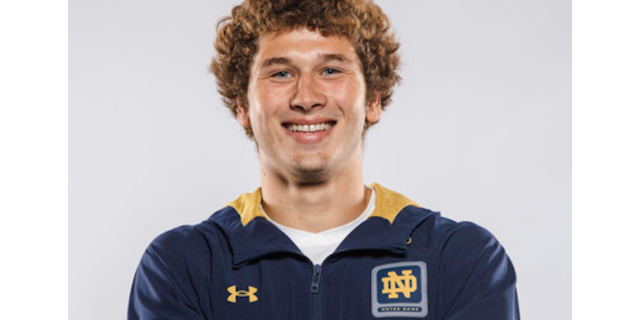ONE PAYCHECK AWAY: From the front lines of our housing crisis
Published 6:00 am Sunday, October 1, 2023

- Julie Akins
This column is about housing and homelessness. I’ve called it “One Paycheck Away” to emphasize the reality that homelessness is as close as one missed paycheck for most Americans — 59% if you believe the “Wealth Survey” by Edward Jones conducted in 2019. It’s likely higher post-pandemic.
Trending
There’s a new name for this: “Rent Burdened.” It means paying more than 30% of your gross income for a roof over your head. If you miss one paycheck for any reason, you’re out on the street.
The Housing and Urban Development Department, the federal agency that provides low-income housing across the nation, acknowledges that its waiting lists are years-long, that the cost of housing has continued double-digit increases for a decade and incomes have not kept up. It acknowledges that retirees living on fixed incomes are the fastest growing group of homeless people.
Forty-seven percent of unhoused people are over 50, more women than men, a University of California study concluded, which matches a comprehensive study conducted by AllCare of Southern Oregon. Kids 12 and younger are homeless. University students who work part time while attending school are sleeping in parking lots. And the person who takes your order at a restaurant or hands you a lottery ticket at the corner store are most likely to be unhoused or precariously housed.
Trending
This matters because without significant investment by communities, we slip closer to a reality our grandparent’s parents faced, a pre-Social Security, pre-New Deal America where people lived in tents and cued up for bread lines. We’re closer to this than some may realize.
But instead of fighting to end poverty, communities fear their unhoused neighbors. They fear building housing for them because if those homes are next door, then property values may drop. And they argue that the unhoused people they see are not really local people who had a thing or two go wrong. They’ve been told the unhoused come from somewhere else.
But that’s not true. Ninety percent of unhoused people grew up where they currently live. They are regular people. They are long-time neighbors.
The headline in a Bend Bulletin editorial republished in this newspaper Sept. 14, said: “When nobody wants a homeless shelter, fewer people get help.”
I circled the words in my thoughts, ‘doesn’t everyone know that?’
The answer came from an insider at AllCare Health. “Most people don’t know that. It’s why we do what we do.”
And what we do at AllCare, a CCO or coordinated care organization, is figure out how to help our low-income, Medicaid and Medicare members with their health, which includes food, medical care and housing, which is also in the clearest of terms medicine.
Our doctors will attest to the fact that when people are unhoused, every bad thing gets worse, especially in physical health. A blister on a heel becomes an infection that cannot heal. People without homes walk 10 miles per day with 25-pound backpacks and they never take their shoes off. Not having shoes while living outside is dangerous. You can never keep a wound clean and dry. So it gets worse. I’ve met people who have lost feet this way — needless tragedy.
Providing shelter — indoors — where human beings can be human is necessary. When a person can use a restroom to clean up, can take off shoes and lay down under clean sheets, can get a healthful meal and deep sleep, minor health problems are more easily discovered, treated and healed. Lives can be restored, and so can communities.
And for those doing the math — it actually costs our doctors in the ballpark of $24,000 less per year to house someone than to treat worsening health conditions on the streets.
This problem of housing and homelessness is about money. But it’s more than that.
The small editorial stated: “Our common nature to worry wins over our common humanity and our generosity. And people going through homelessness lose.”
Worry, I observe, stems from the commonly held view that unhoused people are dangerous. Our worry prevents us from investigating. Our worry prevents us from workable, long-term solutions. It’s not that these things aren’t worth our worry — there are people who struggle with substance use, post-traumatic stress and other conditions who are unhoused. But this is also true of housed folks.
The difference between a housed person who struggles and one who isn’t housed is money and mercy.
We need to give people the help they need. If they are part of the 30% of homeless folks who need substance use treatment or mental health care, those solutions are being funded, rightly so.
For the 70% of unhoused who suffer only from not earning enough for rent — we need housing they can afford. It’s not negotiable if we want to solve the housing crisis.
And opportunities exist.
In the coming months I’ll offer stories about what works and about people you’d enjoy meeting. It won’t always be easy to read, but I’ll work hard to bring you something you may not have heard about.
Starting this week, Julie Akins will write a monthly column on housing. She’s the housing director at AllCare, and prior to that Akins wrote on the subject of housing and homelessness for numerous publications and news outlets across the globe. She has reported from homeless camps throughout the western U.S., conducting hundreds of interviews, documenting conditions and causes of homelessness.
For 30 years, Akins was a reporter and news executive before committing to what she believes is our nation’s biggest story: homelessness and its causes. Akins also founded a nonprofit for building homes for the unhoused, and served four years as an elected official in Ashland.









